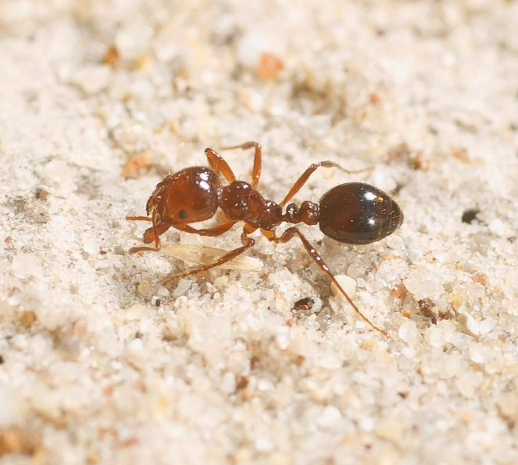Fire Ants
Fire Ant Treatments
Fire ants are a category 1 restricted pest under the Biosecurity Act 2014 and biosecurity zones have been introduced in areas of Queensland to restrict the movement of materials to limit the spread. Native to South America, Fire Ants were first detected in Brisbane in 2001 although it is suspected they arrived 20 years previous. Our climate is the perfect environment for them to thrive in and left untreated Fire Ants can cause more social, economic and environmental destruction than cane toads, rabbits, feral cats and foxes combined.
Fire Ants move quickly, and their sting causes a painful, burning itching sensation lasting up to an hour. Small pustules may form after several hours which may become itchy and can become infected, in rare cases stings can cause a sever and sometimes fatal allergic reaction.
Aggressive and prolific breeders, Fire Ants have no known natural predators. They feed off our native animals including insects, spiders, lizards, frogs, birds and small mammals and have been known to attack domestic pets, young animals and livestock stinging around the eyes, mouth and nose, leading to blindness and suffocation.
Fire Ants can be distinguished by 3 unique features. They are copper brown in colour with a darker abdomen and are quite small in size at 2 – 6mm, about the size of the little black ants you may see around your home. Their nests can appear as dome-shaped mounds or be flat and look like a small patch of disturbed soil, the shape and size of the nest depends on soil type and size of the colony. Ants enter and leave the mound via underground tunnels so nests have no obvious signs of entry or exit holes.

If you see a mound, make sure you are wearing protective clothing including a long sleeved shirt, long pants and enclosed shoes. Take a long stick and lightly poke the nest, if they are Fire Ants they will swarm when disturbed, are coppery brown in colour and they will vary in size. If you believe you have found a Fire Ant nest you will need to report the sighting to the National Fire Ant Program, they aim to respond to all reports, and if necessary treat fire ants within 12 business days, priority is given to areas of greatest public risk.
To help prevent the spread of Fire Ants you can order a free Kit from the National Fire Ant Eradication Program which includes bait and detailed instructions on how to use it, stocks are limited so they also provide a list of suitable products you can purchase from online or local suppliers. Typically, you will start to see the effects of the bait taking place on active nests in a few days with most of the ants dying off after 8 weeks.
For faster more immediate results a more targeted approach is necessary. Fipronil a liquid chemical is applied through an injection rod deep into the nest to eliminate the Queen, the nest is then disturbed and the complete area flooded to ensure maximum results. A chemical treatment can only be provided by a licenced pest technician, for more information and pricing contact us on 07 5559 2936 or email info@completetermitesolutions.com.au
To have the best chance of eradicating Fire Ants we need to work together to preserve our lifestyle so our backyards, parks, playgrounds, beaches and sports grounds don’t become unusable.
Nathan and the team always do a fantastic job, highly recommend for all your pest control needs.
